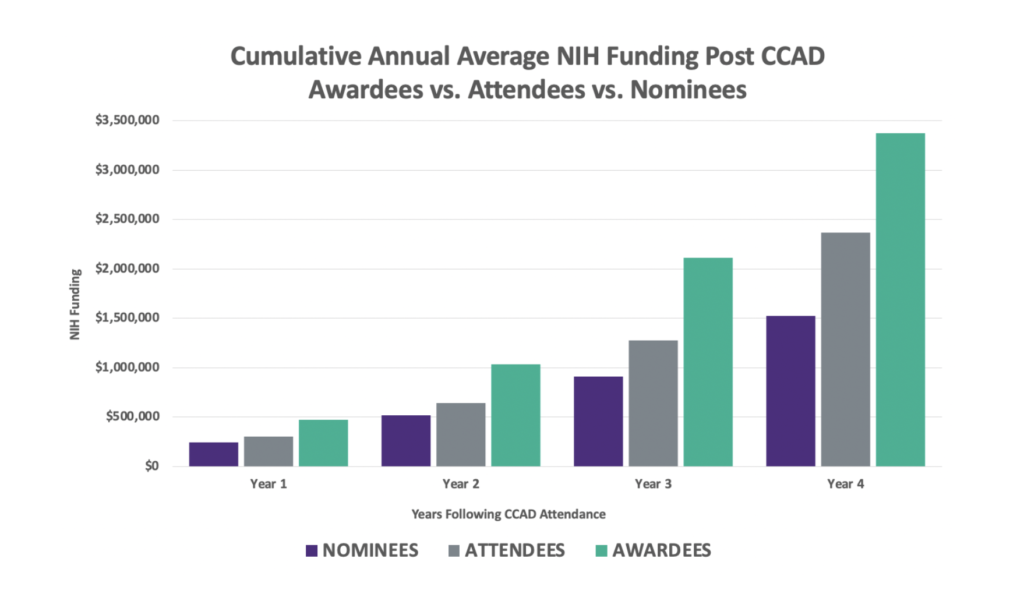New Vision Research Impact
About our Impact
Through the Charleston Conference on Alzheimer’s Disease (CCAD), New Vision Research (NVR) has had a significant impact on the field of Alzheimer’s disease (AD) research. Two ways to observe and measure this impact is by the continued and proliferating collaboration between CCAD alumni, and the long-term effect that early career seed funding through the New Vision Investigator Award has on a scientists’ ability to secure subsequent federal grant funding from the National Institutes of Health (NIH).
Impact Through Collaboration
In the years since CCAD’s inception, the network of collaboration created by CCAD alumni has grown tremendously and demonstrates the success of the CCAD model in fostering innovative collaboration across different fields of AD research. Below is an interactive collaborative map of CCAD alumni who have co-authored papers.
Each circle represents a CCAD alumni who has published a paper in collaboration with at least one other alumni. The purple lines represent the connections between these alumni. You can zoom in and out of the map to get a closer look at the collaborations. You may also click and drag a circle and move it (doing so will move the map around). Clicking on the circle will populate that particular alumni’s publication list. If you prefer, you may use the search bar (top left) to type out a name and by clicking on the chosen name it will also populate with the alumni’s publication list.
New Vision Research makes this tool available to other institutions and laboratories upon request. If you would like to request use of this tool for your specific needs, please click here.
Impact Through Cross-pollination
During CCAD, scientists from all fields of AD research attend the conference, present their research proposals to all attendees, take advantage of networking opportunities, and are encouraged to collaborate with their research.
At traditional conferences, scientists are divided into their respective fields and generally only attend lectures in their own field. One of the greatest and most unique advantages of CCAD is the disruption of this tradition, whereby scientists from different fields attend and listen to research proposals of colleagues from all aspects of research in AD. Since 2013, scientists from the following fields have attended CCAD:

Impact Through Grant Funding
Traditionally, early-career scientists, as well as those with more novel approaches to their research, face considerable difficulty in securing research funds for their work. This is partly due to the higher-risk nature of their work, while both established scientists and those pursuing proven methods of study are considered less risky to fund. New Vision Research changes this paradigm by intentionally connecting and supporting early-career researchers with innovative ideas through CCAD.
While NVR acknowledges the selection bias of the data below, by tracking the career trajectory of CCAD nominees, attendees and awardees over the past seven years, it is apparent that the opportunities afforded to the CCAD community serve as a significant boost to their ability to secure subsequent funding. This is a testament to the impact of cross-field collaboration and seed funding for early-career scientists and their affiliated institutions and organizations.

The New Vision Research model for CCAD is well established and can be replicated for other illnesses or areas of research. It is NVR’s goal to expand this model to help advance research in other diseases.
